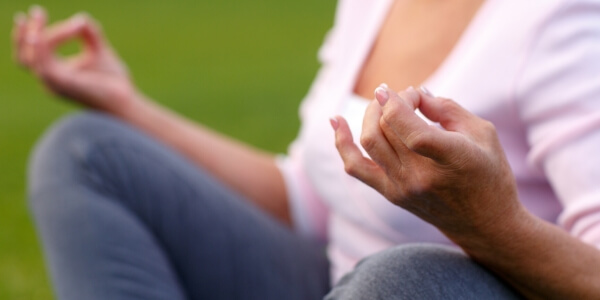What Mindfulness Really Means & How it Makes Life Easier
What is mindfulness?
Does your mind feel like it won’t switch off? And your thoughts are spinning around like a carousel, getting faster and faster inside your head? This is where mindfulness can change your life!
Whether you’ve ever tried to actively practice mindfulness or not, chances are you may think it is all about remaining constantly positive and always feeling happy.
But according to BeyondBlue, this is not the case.
Instead, they say that rather than stopping or controlling the thoughts, judgements or challenging experiences we have, mindfulness encourages us to engage with our experiences and pay attention to what is happening in the moment.
What does that mean exactly? Well, simply put, it allows you to observe the challenges you face. It encourages you to look at them with compassion, awareness and non-judgement, which ultimately enables you to acknowledge your feelings and move forward.
How meditation helps with mindfulness
The primary way to practice mindfulness is through meditation.
In fact, the University of California, Berkeley explains that meditation is a rich Buddhist tradition that allows people to find a deeper understanding of self and others around them.
However, you don’t need to be a Buddhist to meditate. It can be as simple as taking out a few minutes in your day to relax, reflect and be mindful.
There are many proven benefits of mindfulness and meditation both physically and psychologically. UC Berkeley has found that, among other things, there are five predominant benefits to meditating regularly.
- Reduces psychological pain: can lower levels of stress, anxiety and depression.
- Good for our hearts: can decrease risk or symptoms of heart disease.
- Decrease memory loss: can lessen the chances of cognitive decline from aging or Alzheimer’s.
- Improve your immune system: can increase the number of disease-fighting cells in the body.
- Reduce cell aging: can help produce more chromosomes to protect cells from aging.
Ways to incorporate mindfulness in everyday
Practicing mindfulness doesn’t need to be a challenging task. The truth is, it can actually be quite simple to incorporate into your daily life. It’s all about choosing activities or a time in the day that calms you down and allow you to be present in the moment.
This could be when you wake up, while you have your morning coffee, when you eat lunch, on your commute to work, in the shower or even just when you have some alone time at home. Whether you are meditating in response to a challenge or just need to ground yourself from time to time, there is no wrong way to put a moment aside for yourself.
There are plenty of types of meditation as well. You could choose to do some deep breathing exercises, do a head to toe body scan or even do some light yoga. Whether you go self-guided, use an app or head to a studio, ensure that you feel comfortable in what you are doing. That way, you will be able to fully immerse yourself in your chosen form of meditation and encourage a sense of mindfulness.
Why not start your mindfulness practices with the Mindfulness and Meditation Section of our website where you can find sleep meditations, breathing techniques and our 7-week Mindfulness and Meditation Course with Michael.
References:
BeyondBlue: https://www.beyondblue.org.au/personal-best/pillar/wellbeing/what-is-mindfulness
University of California, Berkeley: https://greatergood.berkeley.edu/article/item/five_ways_mindfulness_meditation_is_good_for_your_health





